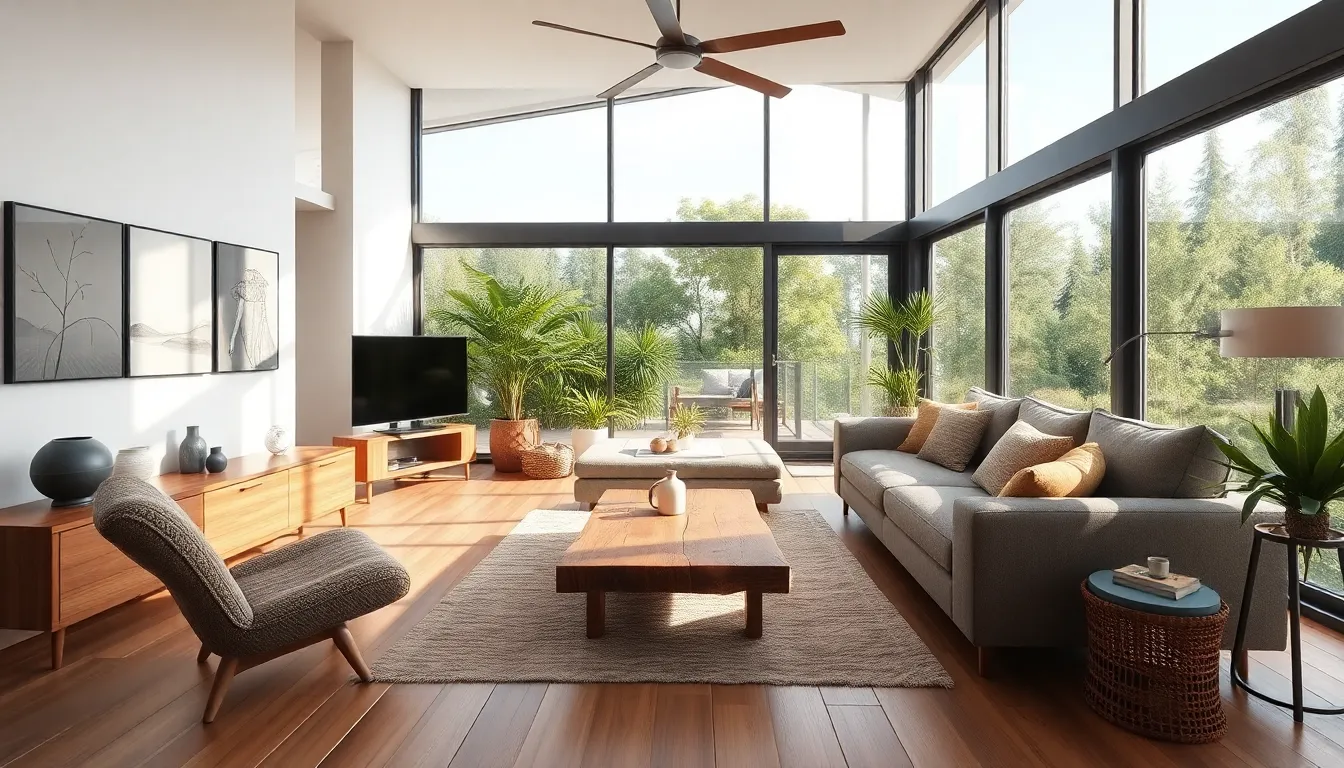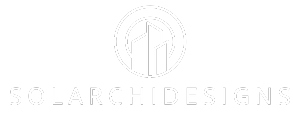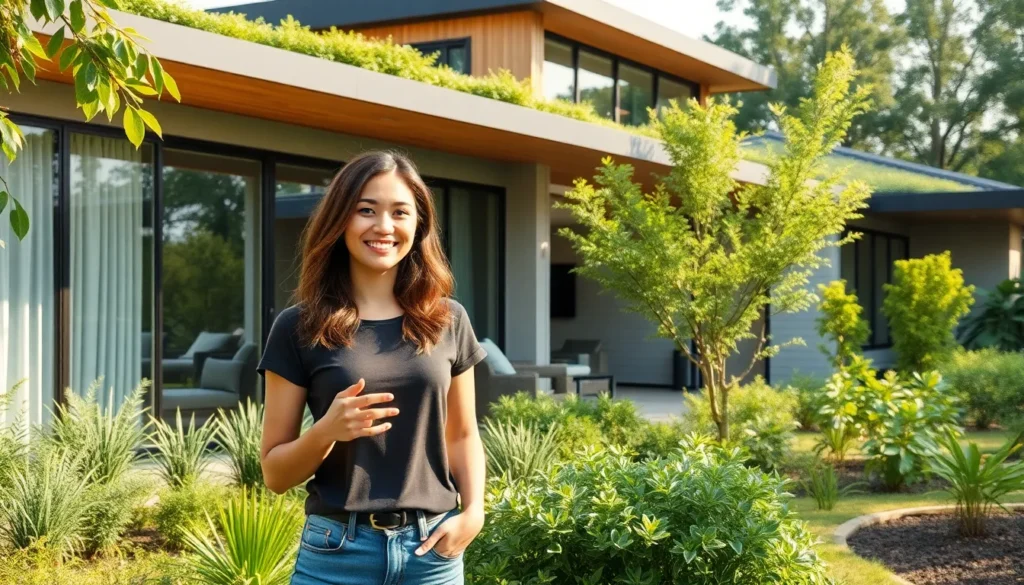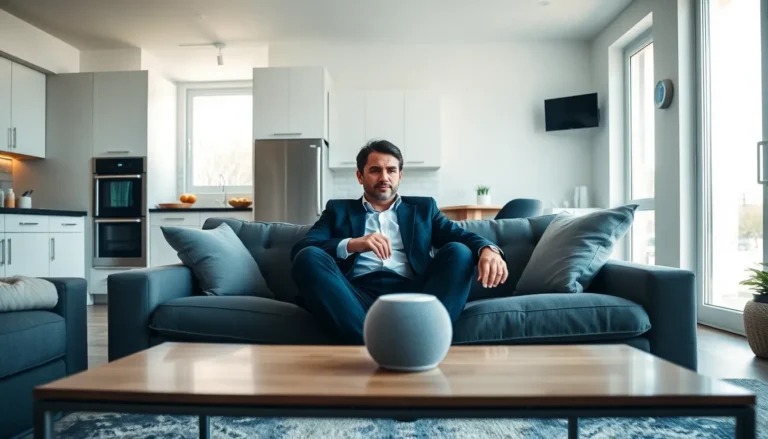In a world where creativity meets functionality, innovative home design is transforming the way people live. Homeowners and architects alike are embracing fresh ideas that blend aesthetics with sustainability, creating spaces that are not just beautiful but also practical. This shift goes beyond mere trends; it reflects a deeper understanding of how our environments impact our daily lives.
From smart technology integration to eco-friendly materials, the possibilities are endless. Innovative designs cater to diverse lifestyles, making homes more adaptable and efficient. As the demand for unique and personalized spaces grows, exploring the latest trends in home design reveals how imagination can redefine comfort and style. Embracing these innovations can lead to a more fulfilling living experience, making every home a true reflection of its inhabitants.
Table of Contents
ToggleOverview of Innovative Home Design
Innovative home design emphasizes creativity and functionality while adapting to contemporary needs. Homeowners and architects focus on features that blend aesthetics with sustainable practices. Trends highlight the importance of integrating smart technology, which enhances efficiency and promotes eco-friendly living environments.
Key Elements of Innovative Home Design
- Sustainable Materials
Sustainable materials include recycled wood, bamboo, and low-VOC paints. These materials reduce environmental impact and provide healthier indoor air quality.
- Smart Technology
Smart technology encompasses devices like thermostats, lighting systems, and security solutions. These technologies increase convenience and energy efficiency.
- Flexible Space Utilization
Flexible space options feature movable walls and multifunctional furniture. Such designs accommodate changing needs and foster a sense of openness.
- Natural Light Integration
Natural light integration often uses large windows and skylights. This practice enhances energy efficiency and improves the overall ambiance of living spaces.
- Indoor-Outdoor Connection
Indoor-outdoor connections utilize patios, decks, and biophilic design elements. These features create seamless transitions between interior and exterior spaces.
Trends in Innovative Home Design
- Minimalist Aesthetic
Minimalist aesthetics prioritize clean lines and uncluttered spaces. This trend fosters calm and reduces distractions.
- Green Roofs and Walls
Green roofs and walls incorporate vegetation to improve insulation and air quality. Such designs support biodiversity and promote sustainable urban living.
- Smart Landscaping
Smart landscaping involves native plants and efficient irrigation systems. This approach conserves water and reduces maintenance.
- Accessible Design
Accessible design focuses on accommodating diverse needs, offering easy navigation for everyone, regardless of mobility.
- Modular Home Construction
Modular home construction offers efficient building processes and customizable layouts. This trend allows for faster completion and adaptive designs.
By focusing on these elements and trends, innovative home design transforms living spaces into functional, aesthetic, and sustainable environments.
Key Trends in Innovative Home Design

Innovative home design trends emphasize creativity and sustainability. These trends enhance both aesthetics and functionality, providing adaptable and efficient living spaces.
Sustainable Materials
Sustainable materials play a crucial role in innovative home design. Recycled wood and low-VOC paints minimize environmental impact. Bamboo and reclaimed materials offer durability and aesthetic appeal. Additionally, eco-friendly insulation and energy-efficient windows improve energy conservation. Incorporating these materials not only supports sustainability but also contributes to healthier indoor environments.
Smart Technology Integration
Smart technology integration transforms modern homes into efficient, user-friendly spaces. Devices like smart thermostats and lighting systems offer convenience, allowing homeowners to control settings remotely. Security systems with cameras and sensors enhance safety while providing peace of mind. Voice-activated assistants streamline everyday tasks, making homes more accessible. The combination of these technologies supports sustainable practices, such as energy management and resource conservation.
Influential Architectural Styles
Innovative home design incorporates various architectural styles that influence modern aesthetics and functionality. Key styles include minimalism and biophilic design.
Minimalism
Minimalism emphasizes simplicity and functionality. Clean lines, uncluttered spaces, and a monochromatic palette characterize this style. Practical elements like built-in storage reduce visual clutter while maximizing space efficiency. Furniture often serves multiple purposes, reflecting an approach to living that values experience over excess. Examples include modular seating and expandable dining tables. This style promotes tranquility and mindfulness by creating serene living environments that prioritize essential elements.
Biophilic Design
Biophilic design integrates natural elements to enhance well-being and connection to nature. Features often include abundant natural light, indoor plants, and the use of organic materials like wood and stone. Incorporating elements such as green walls and water features promotes a soothing atmosphere. Research indicates that biophilic design can reduce stress and increase productivity. Examples include homes with large windows that frame outdoor views or layouts that incorporate nature directly into living areas. This style fosters a harmonious relationship between inhabitants and their environments, aligning with sustainability goals.
Benefits of Innovative Home Design
Innovative home design offers numerous advantages, significantly improving living environments. These benefits include increased energy efficiency and enhanced aesthetic appeal.
Increased Energy Efficiency
Increased energy efficiency arises from using sustainable materials and smart technology. Energy-efficient appliances, such as ENERGY STAR-rated devices, consume less power and reduce utility bills. Strategic placement of large windows and skylights maximizes natural light, which lessens reliance on artificial lighting. Insulation made from eco-friendly materials enhances temperature regulation, maintaining comfortable indoor climates throughout the year.
Implementing smart home systems also contributes to energy conservation. Smart thermostats and lighting controls learn user preferences and adjust settings automatically, optimizing energy use. Solar panels, when integrated, further reduce electricity costs and reliance on non-renewable resources. Homes designed with these features achieve significant reductions in energy consumption and environmental impact.
Enhanced Aesthetic Appeal
Enhanced aesthetic appeal defines innovative home design. Unique architectural styles and creative layouts create visually striking spaces. Open floor plans promote connectivity and flexibility, allowing homeowners to arrange furnishings and decor according to personal taste.
Natural elements play a significant role in aesthetic enhancement. Biophilic design emphasizes organic materials, indoor gardens, and large windows that invite the outdoors in. Landscaped outdoor areas designed with green roofs or wall gardens create a harmonious blend between interior and exterior spaces, enriching overall visual interest.
Minimalist designs prioritize simplicity and functionality. Clean lines, uncluttered spaces, and intentional color palettes contribute to a tranquil ambiance. This aesthetic fosters an environment that is both soothing and inviting, making innovative homes not just places to live, but spaces that inspire and rejuvenate.
Challenges in Implementation
Implementing innovative home design presents several challenges that homeowners and architects often encounter. These challenges range from financial constraints to regulatory hurdles.
Financial Limitations
Financial limitations can hinder the adoption of advanced design concepts. Projects involving sustainable materials and smart technology might demand a higher initial investment. Budget constraints may require compromises on design quality or deny access to the latest innovations.
Regulatory Hurdles
Regulatory hurdles can complicate the design process. Zoning laws, building codes, and permit requirements can restrict certain innovative approaches. Homeowners may encounter delays or additional costs due to unclear regulations or the need for multiple approvals.
Skill Gaps
Skill gaps exist among contractors and builders familiar with innovative materials and technologies. Many may lack the necessary training to implement modern solutions effectively. This can result in potential design flaws or miscommunication in project execution.
Material Availability
Material availability poses a practical challenge. Sourcing sustainable materials can prove difficult, especially in regions where eco-friendly products are less common. Supply chain disruptions can delay projects and increase costs.
Resistance to Change
Resistance to change surfaces among traditional builders and homeowners accustomed to conventional designs. This mindset may obstruct the embrace of innovative methods. Promoting education and awareness can help counteract this resistance.
Maintenance Considerations
Maintenance considerations arise with new technologies and designs. Advanced systems may require specialized knowledge for upkeep. Homeowners must commit to ongoing education or hire professionals for effective management of costs and efficiency needs.
Innovative home design represents a significant shift toward creating spaces that prioritize both beauty and sustainability. By integrating smart technology and eco-friendly materials, homeowners can enjoy environments that enhance their quality of life while minimizing their ecological footprint.
As trends evolve, the focus on flexible spaces and natural elements continues to reshape how people interact with their homes. Despite the challenges that may arise, the benefits of innovative design far outweigh the obstacles.
Embracing these concepts not only leads to more efficient living but also fosters a deeper connection between individuals and their surroundings. Ultimately, innovative home design is about crafting spaces that reflect personal values and aspirations, transforming houses into true homes.



